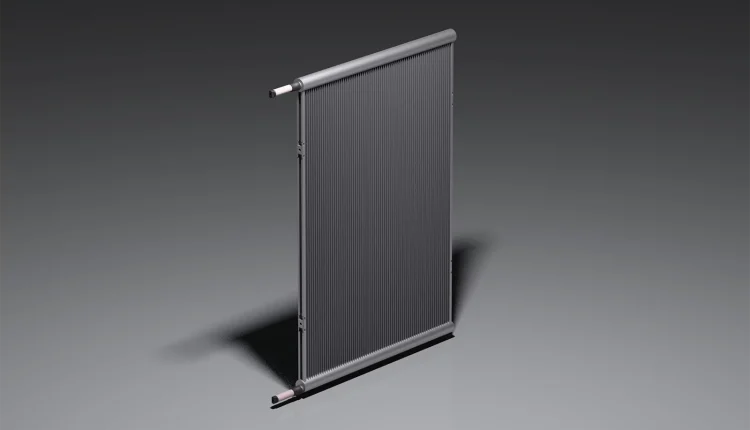Microchannel Evaporator Cuts Charge and Footprint by 35 %
A microchannel evaporator built by Kaltra replaces bulky round-tube coils with flat aluminum tubes that contain twenty to eighty ports each. Every port acts as an individual flow path, multiplying surface contact with air while keeping refrigerant velocity high enough to sweep oil back to the compressor. The outcome is a microchannel evaporator that delivers the same cooling capacity at half the face area and 35 % less internal volume, cutting refrigerant charge and Global Warming Potential in a single move.
Aluminum fins are louvered at 32° to trip boundary layers, pushing air-side heat-transfer coefficients above 90 W m⁻² K⁻¹ at standard airflow. Inside the tubes, machined micro-ports create swirl even at mass fluxes as low as 50 kg m⁻² s⁻¹, so the microchannel evaporator maintains stable superheat across part-load conditions down to 20 % compressor speed. Uniform temperature distribution eliminates the cold spots that cause frost bridges, extending defrost intervals from 45 minutes to 90 minutes in cold-room applications.
Kaltra vacuum-brazes every joint at 600 °C under nitrogen, producing a metallurgical bond that survives 650 h neutral salt spray without measurable corrosion. The all-aluminum core removes galvanic couples between copper and aluminum that shorten coil life in coastal or urban atmospheres, giving the microchannel evaporator a 20-year design cycle without protective coatings.
Charge reduction has immediate payback. A 250 kW cold-store unit fitted with the microchannel evaporator needs only 28 kg of R-744 instead of 55 kg, translating into 5 000 € savings per year on refrigerant alone under today’s carbon-tax regimes. Lower internal volume also shortens pump-down time during service, cutting maintenance hours by 30 %.
Selection software now embeds AI routines trained on 50 000 laboratory tests. Enter capacity, air flow, footprint and refrigerant, and the code returns an optimized microchannel evaporator with validated performance curves, pressure-drop limits and live price within one minute. Export files plug directly into Revit and SAP, so mechanical and energy models stay synchronized from quotation to commissioning.


Comments are closed.